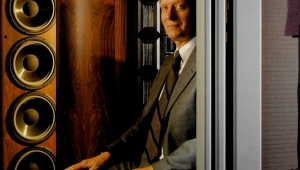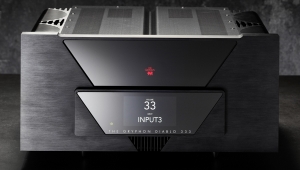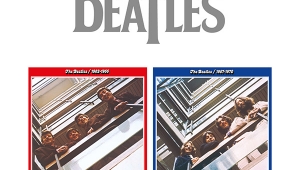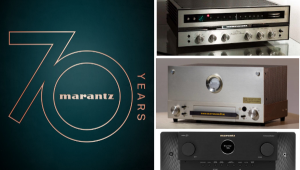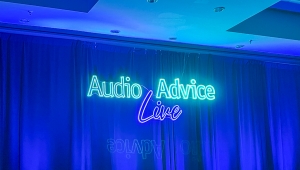| Columns Retired Columns & Blogs |
Was Joyce Hatto the Greatest Pianist Almost Nobody Ever Heard Of?
Many people remember the 1990 Milli Vanilli scandal, in which Rob Pilatus and Fabrice Morvan were stripped of their Best New Artist Grammy award when it was revealed they hadn't actually performed on the disc. Of course, "borrowing" has long been a part of the pop music world, as George Harrison's "My Sweet Lord," Led Zeppelin's "Whole Lotta Love," and almost any sampled recording can attest; however, most listeners have probably assumed things are a lot more straightforward in the world of classical performance and recording.
Perhaps not, as waves of speculation erupt over allegations concerning Joyce Hatto's 100-odd recordings of the major works of composers ranging from Scarlatti to Messiaen. A little background: Hatto was born in 1928 and studied piano with some of the greatest pianists of the early 20th century, including Benno Moiseiwitsch, Nicolai Medtner, Alfred Cortot, Matyas Seiber, and Clara Haskil, among others. In 1970, she recorded Bax's Symphonic Variations with conductor Vernon Handley for EMI—a performance that was not only the first complete recording of the work since the 1920s, but is considered to be the benchmark by which all others must be measured.
By 1972, her cancer, and "the uncertain arrival of excruciating pain on the concert platform," as The Guardian put it in her 2006 obituary, made it impossible for her to continue performing in public. Surgery and chemotherapy were not successful; however, she credited "a new form of treatment from the US" with keeping her energy levels high enough to perform in the recording studio, specifically, the studio of husband, William Barrington-Coupe, owner of the Concert Artists Recordings label. In that Cambridge studio she had, as The Guardian put it, "the luxuries of one of the two Steinways that Rachmaninoff played when in the UK, and of being able to record whenever the mood took her or health allowed."
Starting in the 1990s, and coming at a phenomenal pace, Concert Artists Recordings issued Hatto's performances of the complete solo keyboard works of Haydn, Mozart, Beethoven, Schubert, and Prokofiev, not to mention virtually complete runs of Chopin and Liszt, as well as all of Brahms', Saint-Saäns', and Rachmaninoff's piano concertos. She was said to prefer to work in complete movements, without edits. From The Guardian obituary again, "I do my practicing at home."
Shortly before Ms. Hatto's death, critics in the US and UK began beating their drums, calling her "the greatest instrumentalist almost nobody had heard of," as Richard Dyer wrote in The Boston Globe.
On February 15, the story took an odd turn, when Gramophone's website published an article by editor James Inverne questioning the authenticity of at least several of Ms. Hatto's performances. "Several days ago, Gramophone critic [Jed Distler] decided to listen to a Hatto Liszt CD, of the 12 Transcendental Studies," Inverne wrote. "He put the disc into his computer to listen, and something awfully strange happened. His computer's player identified the disc as, yes, the Liszts, but not a Hatto recording. Instead, his display suggested that the disc was one on BIS Records, by the pianist László Simon." Upon retrieving Simon's disc from his collection, Distler said, "they sounded exactly the same."
Of course, it is always possible that the computer's iTunes music recognition software misattributed the disc, so Gramophone sent the Hatto and Simon discs to Pristine Audio's Andrew Rose, who did exacting analyses of the discs. His conclusions? That 10 of the 12 études on the Hatto disc were, in fact, Simon performances—albeit at least one of them had been altered in order to change the timing (a typical way of identifying performances). The other two études were by audiophile favorite Nojima from the 1993 Reference Recordings disc Nojima Plays Liszt (RR-25 CD).
Wavelength comparisons by Rose of other Hatto recordings seemingly show them to be slightly manipulated recordings by other pianists: Her acclaimed Godowsky Studies after the Chopin Etudes appears to be by Carlo Grante, her recording of Rachmaninoff's third piano concerto appears to be that of Yefim Bronfman and the LPO under Salonen, and Hatto's Chopin Mazurkas appears to be Eugen Indjic's.
The Center for the History and Analysis of Recorded Music (CHARM) analyzed the two recordings of the Mazurkas, using a visualization methodology it calls "timescapes," which are, not surprisingly, based on timing information, specifically the duration of each beat in the performance. What timescapes show graphically is "where in a particular recording one pianist's rubato is most like another's." To get an idea of how this type of comparison works, CHARM did timescape analyses of two different reissues of Jerzy Smidowicz's recording of Op.68 No.3. On a scale where precise agreement would be 1.0, the two reissues showed a correlation of 0.993. Comparing the Hatto and Indjic performances of the same mazurka resulted in a correlation of 0.996; comparing all 54 resulted in a correlation of 0.999.
Conclusive? Perhaps not, as there is still a one in 1000 possibility that Hatto made her own recordings, but certainly troubling.
There are other worrisome details, such as the identity of the conductor of Hatto's concerto recordings, who is identified as René Køhler, who has never conducted anything else on which we have information, or that of the orchestra Køhler was supposed to have led, the generic-sounding National Philharmonic Symphony Orchestra. As music blogger hiperhip has suggested, that's one step away from National Symphony Symphony Symphony.
Concert Artists Recordings owner William Barrington-Coupe told Gramophone's Inverne that he couldn't explain the similarities and would appreciate it if anyone could explain them. According to an article in The New York Times, by Friday Barrington-Coupe had stopped returning phone calls and email messages.
What remains the greatest mystery here is why anyone would go to all of this effort to create such a body of recorded work based on such a thin shell of deceit. Music blogger hiperhip asks some other, also fascinating questions: Some of the recordings copied are quite well known—why use such readily detectable sources? Others are quite obscure—again, why those? And, hiperhip asks, did the music critics who heard such transcendental revelations in Hatto's recordings, supposedly made while she was ill and away from the limelight, hear more than they would have heard from young, healthy musicians?
- Log in or register to post comments
